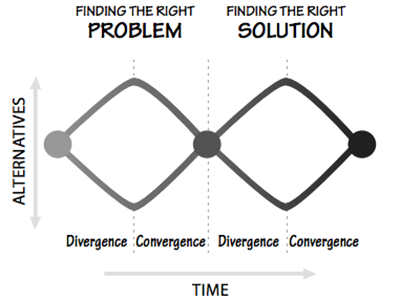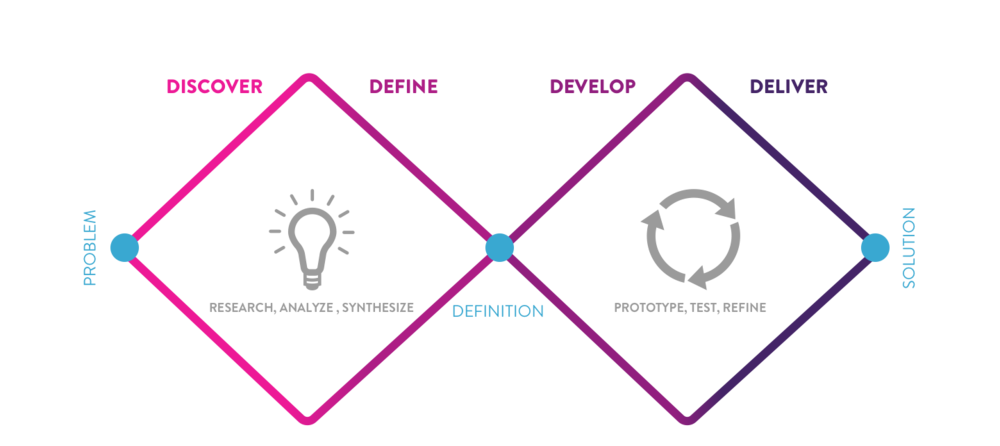
In the creative process, you start with an idea. You explore aspects of that idea – go wide – and diverge into many directions to better understand and define your problem. You follow many paths – some lead to dead-ends, some stray too far off from your vision and some lead to the same place.
Then you converge. Having explored a number of possibilities, you dismiss the paths that are dead-ends or stray too far and focus on the paths that converge around your vision. Now you have clarity of what “it” is… and you diverge again.
You take your clarity on what the problem is that you are solving and you explore solutions. Same process as before, you explore your options – looking for suitable solutions. There may be plenty of promising ideas that need to be vetted. Through prototyping and testing, you converge again on your solution.
This process is the same if you are making a piece of art, innovating a new product or service or finding a cure for cancer. This is Design Thinking.

Discover, Define, Develop and Deliver. You start with an initial insight, problem or statement of work. Then you ask, “What is it” to understand (observe) and diverge to “What if” and converge on a point-of-view (definition). Diverge again as you ask, “What works,” ideate, iterate through prototypes, test and converge again as you refine and deliver your solution.
Diverge, Converge, Diverge and Converge again. It can be confusing and not for the faint of heart who lose hope of finding a solution at the peaks of divergence. For those who are comfortable with ambiguity, have patience and know how to navigate these waters, it is a thrilling journey of discovery and innovation.
On Wednesday, February 22, I presented a live online seminar – Design Thinking in Agile: Google Design Sprint vs. IBM Design Loop for the Nielsen Norman Group. PURCHASE RECORDING ($99)